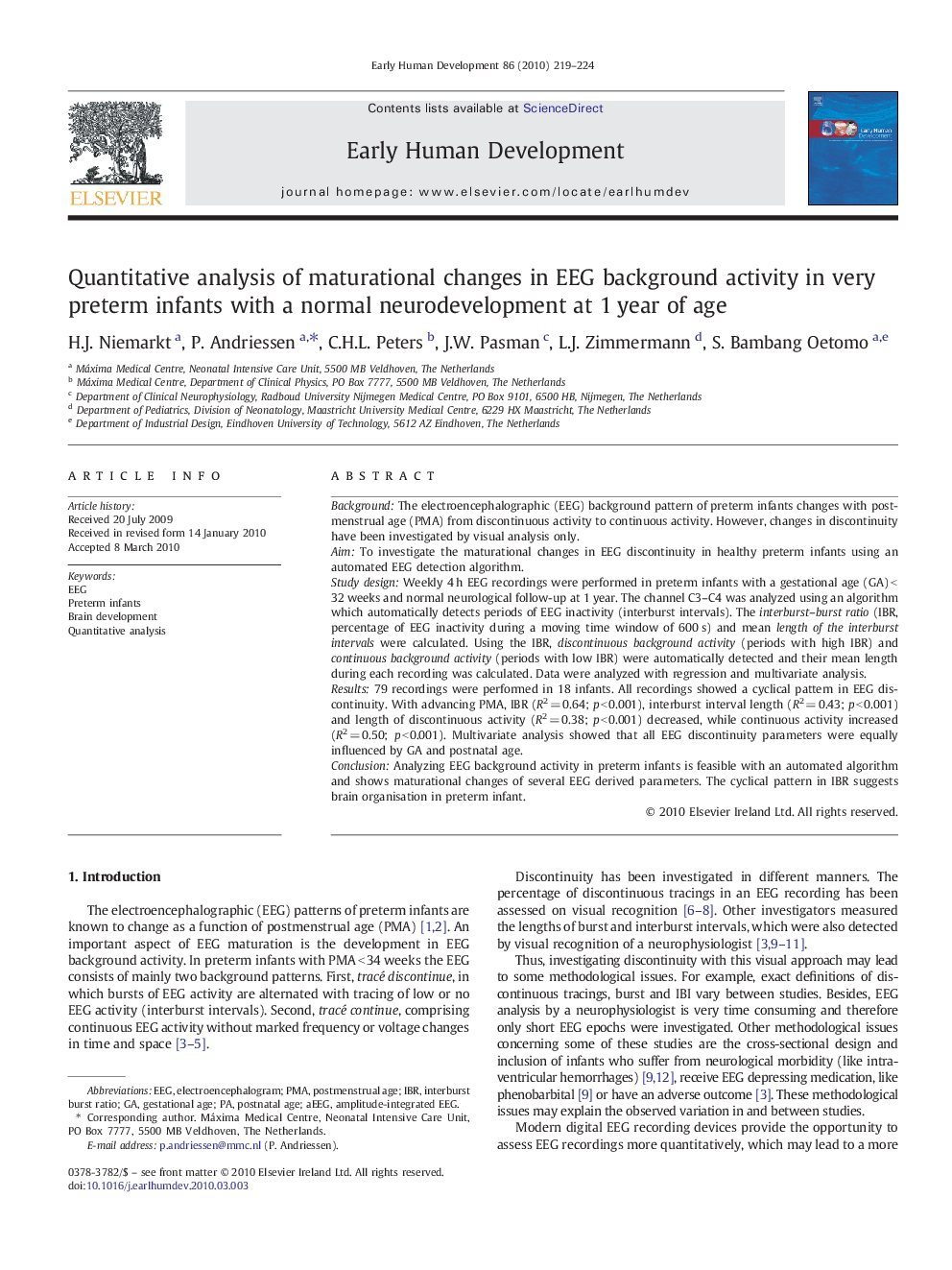| Article ID | Journal | Published Year | Pages | File Type |
|---|---|---|---|---|
| 3918457 | Early Human Development | 2010 | 6 Pages |
BackgroundThe electroencephalographic (EEG) background pattern of preterm infants changes with postmenstrual age (PMA) from discontinuous activity to continuous activity. However, changes in discontinuity have been investigated by visual analysis only.AimTo investigate the maturational changes in EEG discontinuity in healthy preterm infants using an automated EEG detection algorithm.Study designWeekly 4 h EEG recordings were performed in preterm infants with a gestational age (GA) < 32 weeks and normal neurological follow-up at 1 year. The channel C3–C4 was analyzed using an algorithm which automatically detects periods of EEG inactivity (interburst intervals). The interburst–burst ratio (IBR, percentage of EEG inactivity during a moving time window of 600 s) and mean length of the interburst intervals were calculated. Using the IBR, discontinuous background activity (periods with high IBR) and continuous background activity (periods with low IBR) were automatically detected and their mean length during each recording was calculated. Data were analyzed with regression and multivariate analysis.Results79 recordings were performed in 18 infants. All recordings showed a cyclical pattern in EEG discontinuity. With advancing PMA, IBR (R2 = 0.64; p < 0.001), interburst interval length (R2 = 0.43; p < 0.001) and length of discontinuous activity (R2 = 0.38; p < 0.001) decreased, while continuous activity increased (R2 = 0.50; p < 0.001). Multivariate analysis showed that all EEG discontinuity parameters were equally influenced by GA and postnatal age.ConclusionAnalyzing EEG background activity in preterm infants is feasible with an automated algorithm and shows maturational changes of several EEG derived parameters. The cyclical pattern in IBR suggests brain organisation in preterm infant.
